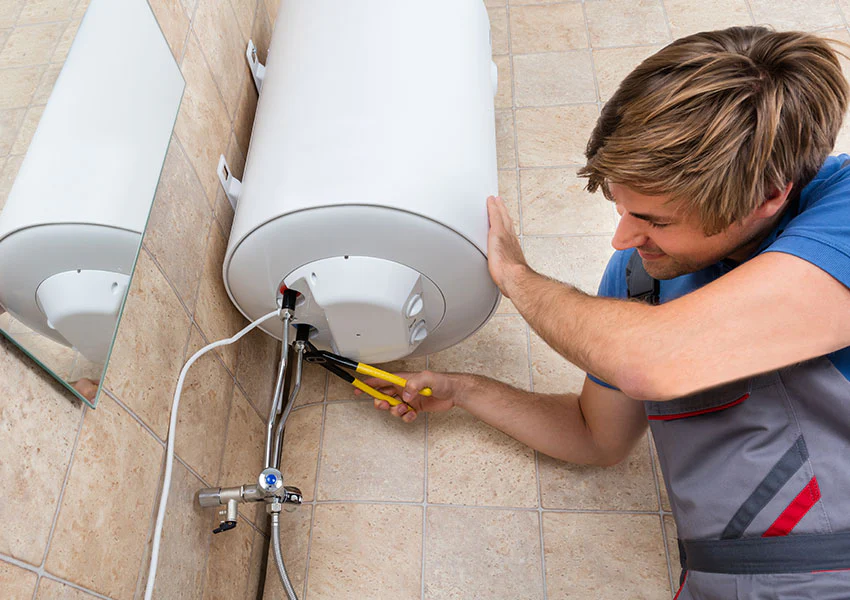Simple Ways to Maintain Your Home's Hot Water System ProperlyEasy Ways to Maintain Your Home's Hot Water System Properly
Simple Ways to Maintain Your Home's Hot Water System ProperlyEasy Ways to Maintain Your Home's Hot Water System Properly
Blog Article
Almost everyone seems to have his or her own idea when it comes to Tips on Maintaining a Water Heater.

Warm water is necessary for daily convenience, whether it's for a rejuvenating shower or cleaning meals. To guarantee your hot water system runs efficiently and lasts longer, regular upkeep is essential. This write-up supplies practical suggestions and understandings on how to keep your home's hot water system to stay clear of disruptions and pricey repairs.
Intro
Maintaining your home's warm water system may appear daunting, however with a couple of easy actions, you can ensure it runs efficiently for many years ahead. This guide covers whatever from understanding your hot water system to do it yourself maintenance suggestions and recognizing when to hire professional aid.
Significance of Keeping Your Hot Water System
Normal maintenance not just prolongs the lifespan of your warm water system yet also guarantees it operates successfully. Neglecting upkeep can lead to decreased effectiveness, greater energy expenses, and even premature failing of the system.
Signs Your Hot Water System Demands Maintenance
Recognizing when your warm water system requires attention can avoid significant concerns. Look out for indications such as irregular water temperature, strange noises from the heating unit, or rustic water.
Comprehending Your Warm Water System
Prior to diving into maintenance tasks, it's practical to recognize the standard components of your hot water system. Typically, this includes the water heater itself, pipelines, anode poles, and temperature level controls.
Month-to-month Upkeep Tasks
Normal month-to-month checks can help catch minor issues before they escalate.
Purging the Water Heater
Flushing your water heater removes sediment buildup, improving performance and extending its life.
Monitoring and Changing Anode Rods
Anode poles stop deterioration inside the container. Examining and replacing them when worn out is essential.
Examining and Changing Temperature Settings
Adjusting the temperature settings ensures optimal performance and safety.
Do It Yourself Tips for Upkeep
You can execute several maintenance tasks on your own to maintain your warm water system in leading condition.
Checking for Leaks
Routinely evaluate pipelines and links for leaks, as these can result in water damages and higher expenses.
Evaluating Pressure Relief Valves
Examining the stress safety valve ensures it functions appropriately and protects against extreme stress accumulation.
Insulating Pipelines
Protecting warm water pipes reduces warm loss and can conserve energy.
When to Call a Specialist
While DIY upkeep is useful, some issues need professional experience.
Complicated Concerns Needing Professional Assistance
Examples consist of major leaks, electric problems, or if your hot water heater is continually underperforming.
Routine Professional Upkeep Advantages
Professional upkeep can include extensive evaluations, tune-ups, and making certain compliance with security standards.
Final thought
Routine upkeep of your home's hot water system is necessary for efficiency, durability, and expense financial savings. By complying with these pointers and recognizing when to seek expert aid, you can ensure a reliable supply of hot water without unexpected interruptions.
Water Heater Maintenance Tips
Test the TPR Valve
Shut off the power and the cold-water supply valve. Place a bucket under the pipe connected to the temperature-pressure-release (TPR) valve on the top or side of the tank. (This valve opens if the tank pressure gets too high.) Lift the valve’s tab to let some water out, then let go. If water keeps flowing, drain the tank partway, unscrew the old valve with a pipe wrench, and install a new one. Check the Anode Rod
Put a hose to the tank’s drain cock and let out a few gallons of water. Now fit a 1 1/16-inch socket onto the rod’s hex head on top of the heater (or under its top plate) and unscrew the rod. If it’s less than ½ inch thick or coated with calcium, buy a new one, wrap its threads with Teflon tape, put it back in the tank, and tighten securely. Use this segmented rod if headroom above the tank is limited. Drain the Tank and Wash Out Sediment
Drain the remaining water in the tank into the bucket, then stir up the sediment on the tank’s bottom by briefly opening the cold-water supply valve. Drain and repeat until clean water comes out of the hose. Close the drain cock, refill the tank, and turn its power back on. Adjust the Temperature
Find the temperature dial on the side of the tank and unscrew its cover. Adjust the dial to 120 degrees using a flathead screwdriver. For every 10 degrees the temperature is lowered, you can expect to save up to 5 percent in energy costs. Turn the water heater off or the thermostat down to its lowest setting if you plan to be away from home for more than three days. Insulate the Pipes
Buy some self-sticking 3/8-inch-thick foam pipe insulation that matches the pipes’ diameter. Slide the foam over the hot-and cold-water pipes as far as you can reach. Insulating the cold-water pipe prevents condensation in summer. Peel the tape and squeeze the insulation closed. If the pipe is 6 inches or less from the flue, cover it with 1-inch-thick unfaced fiberglass pipe wrap. https://www.thisoldhouse.com/plumbing/21016402/how-to-maintain-a-water-heater

As a devoted person who reads on Water Heater Maintenance Tips You Can't Afford to Forget, I figured sharing that topic was really helpful. Sharing is nice. Helping others is fun. Thanks for your time spent reading it.
Click Here Report this page